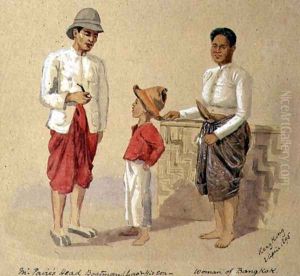Major General R.G. Woodthorpe Paintings
Major General Robert Gosset Woodthorpe was not primarily known as an artist but as a British army officer and an administrator in British India. Born on May 28, 1844, in the United Kingdom, Woodthorpe served with the British Indian Army and was also an ethnographer, geographer, and surveyor. He is notably remembered for his contributions to the knowledge of the geography and the various ethnic groups in the northeastern frontier of British India, which is present-day Northeast India and parts of Myanmar.
Woodthorpe's career was marked by his participation in military expeditions, including the Lushai Expedition from 1871 to 1872, which was aimed at pacifying the tribal areas of what is now Mizoram in India. During his time in India, he developed an interest in the local cultures and traditions, and he documented these in various articles and a book, 'The Lushai Expedition, 1871-1872'. His work provided valuable insights into the ethnography and customs of the region's indigenous peoples.
Woodthorpe also contributed to the field of cartography and was involved in the Survey of India, which was responsible for mapping the territory of British India. His surveys helped in the delineation of borders and in the understanding of the region's topography. Despite his military and administrative roles, Woodthorpe's interactions with the local populations and his scholarly pursuits distinguished him as a significant figure in the British colonial exploration and administration of Northeast India.
He reached the rank of Major General before his retirement and passed away on October 28, 1920. While Woodthorpe did not leave behind a legacy as an artist in the conventional sense, his drawings, maps, and ethnographic studies serve as an important historical record of the time. His work is of particular interest to historians, anthropologists, and geographers studying the colonial period and the cultural dynamics of the Indian subcontinent's frontier regions.
